Porcelain Onlay Recementation
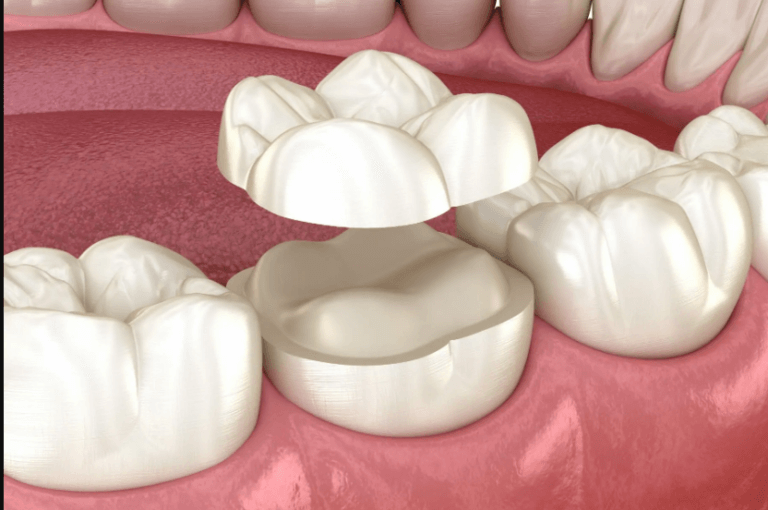
What Is Dental Onlay Recementation?
A Porcelain Onlay is a type of dental restoration that is used to repair a damaged or decayed tooth when the damage extends beyond a simple filling but does not warrant a full dental crown. It falls in between these two options and is often referred to as a “partial crown” or “inlay-onlay.” The onlay is custom-made to fit precisely on the tooth’s surface, covering and protecting it from further deterioration while blending seamlessly with the surrounding natural teeth.
However, even with meticulous care, factors like time, wear and tear, or unexpected accidents can lead to the dental onlay falling off and in need of dental onlay recementation. This process involves reattaching an onlay that has become loose or dislodged from its original position. Dental onlay recementation is a relatively common procedure that not only restores your onlay’s stability but also safeguards your oral health and the investment you’ve made in your smile. Before deciding on whether Dental Onlay Recementation are right for you, there are some things you should know:
- Who Needs Dental Onlay Recementation?
- What Are The Advantages Of Dental Onlay Recementation?
- What Are The Alternative Treatments If I Do Not Choose Dental Onlay Recementation?
- How Much Does Dental Onlay Recementation Cost?
- What Are The Steps In The Dental Onlay Recementation Procedure?
- Can I Have Dental Onlay Recementation If I Am Pregnant?
- How Long Does Dental Onlay Recementation Last?
- What Are Common Problems with Dental Onlay Recementation?
If you have any further questions about Dental Onlay Recementation or other dental services offered at Atlas Dental, please contact us.

Free phone consultation
Have questions about tooth fillings? Schedule a free phone consultation with our Toronto dentist.

5 star google reviews
Our patients love us! See for yourself why more and more people are choosing Atlas Dental for their dental fillings.

Book Emergency tooth filling
Do you think you have cavities and need an appointment? Book an emergency tooth filling online.
Who Needs Dental Onlay Recementation?
Dental onlays are designed to be durable and long-lasting, but there are situations in which they may become loose or dislodged, requiring prompt recementation. Here are some common scenarios where you might find yourself in need of dental onlay recementation:
- Natural Wear and Tear: Over time, the cement that holds a dental onlay in place can weaken due to natural wear and tear. Chewing, grinding, and even habits like biting on hard objects can gradually undermine the bond between the onlay and the underlying tooth structure.
- Inadequate Bonding: Sometimes, during the initial placement of a dental onlay, the bonding process might not be as effective as intended. This can lead to the onlay becoming loose or falling off unexpectedly.
- Tooth Decay: If the tooth beneath the onlay develops new cavities or decay, it can compromise the stability of the onlay. Decay weakens the tooth structure, making it harder for the onlay to stay securely in place.
- Accidental Trauma: A sudden impact to the mouth, whether from a fall, a sports injury, or any type of accident, can cause a dental onlay to become dislodged. It’s essential to seek immediate attention if this occurs, as it can expose the underlying tooth to potential damage or infection.
- Changes in Bite or Tooth Alignment: Significant changes in your bite due to dental work, teeth shifting, or jaw issues can affect the way your dental onlay fits. This altered bite can create excessive pressure on the onlay, leading to its displacement.
If you experience any of these situations, it’s important to consult your dentist as soon as possible. Ignoring a loose or dislodged onlay can lead to further oral health issues, including discomfort, infection, and potential damage to the underlying tooth structure. Your dentist will evaluate the condition of the onlay and the underlying tooth, determining whether recementation is the appropriate course of action. If you have further questions about Dental Onlay Recementation, please contact us.
What Are the Advantages of Dental Onlay Recementation?
Dental onlay recementation offers several important advantages for both your oral health and overall well-being. When you promptly address a loose or dislodged onlay through recementation, you can enjoy the following benefits:
- Preservation of Tooth Structure: Dental onlays are designed to protect and strengthen compromised teeth. By recementing a loose onlay, you safeguard the underlying tooth from further damage, decay, or infection. This proactive approach can help you avoid more extensive and costly dental procedures down the road.
- Restored Functionality: A loose onlay can interfere with your ability to bite and chew properly. Recementation ensures that the onlay is securely repositioned, allowing you to enjoy normal eating and speaking without discomfort or limitations.
- Maintained Aesthetics: Dental onlays are crafted to match the color, shape, and size of your natural teeth, contributing to a seamless smile. Recementing an onlay helps preserve this aesthetic harmony, ensuring that your smile looks and feels just as it should.
- Prevention of Sensitivity: A dislodged onlay can expose the sensitive underlying tooth structure, leading to discomfort when consuming hot, cold, or sweet foods and beverages. Recementation protects the tooth’s nerve endings from external stimuli, reducing sensitivity.
- Prevention of Infection: A loose onlay can create gaps between the onlay and the tooth, allowing bacteria and food particles to accumulate in hard-to-reach areas. This buildup can lead to the development of cavities and even infections. Recementation closes these gaps, reducing the risk of oral health complications.
- Longevity of the Onlay: When a dental onlay becomes loose, it can experience additional stress and pressure, increasing the likelihood of further damage. Recementation helps extend the lifespan of the onlay by restoring its proper fit and function.
- Cost-Effective Solution: Addressing a loose onlay promptly through recementation is often more cost-effective than waiting until more extensive dental issues arise. Recementation prevents the need for potential tooth extraction, root canal treatments, or onlay replacements.
- Improved Confidence: A secure smile boosts your confidence. Recementing a loose onlay ensures that you can smile, speak, and interact with others without worrying about the appearance of your teeth.
It’s important to remember that dental onlay recementation should only be performed by a qualified dentist. Attempting to fix a loose onlay at home or delaying professional treatment can lead to complications. If you suspect that your dental onlay is loose or dislodged, schedule an appointment with your dentist as soon as possible. If you have further questions about Dental Onlay Recementation, please contact us.
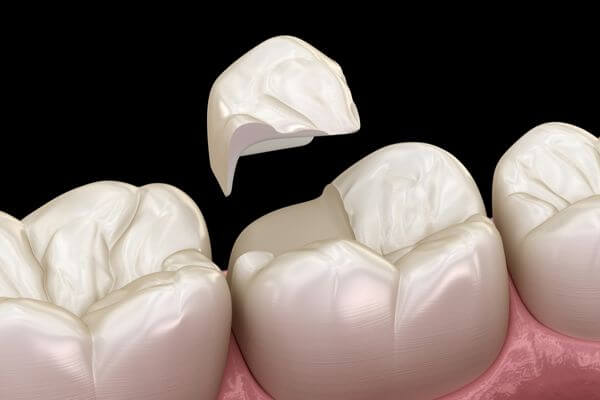
What Are the Alternative Treatments If I Do Not Choose Dental Onlay Recementation?
Choosing not to undergo dental onlay recementation when your onlay becomes loose or dislodged can lead to various oral health complications. Depending on the severity of the issue and the condition of your tooth, several alternative treatments may be considered:
- Dental Onlay Remake: If the existing onlay is damaged, worn, or no longer fits properly, your dentist might recommend a complete dental onlay remake. This involves crafting a new onlay to replace the old one. While effective, this option can be more time-consuming and may require additional dental visits.
- Dental Filling: Dental fillings are a common alternative to inlays, especially for smaller cavities or areas of decay. Fillings involve removing the decayed portion of the tooth and filling the space with a dental material, typically composite resin or amalgam. Fillings are a more conservative option compared to inlays and are suitable for addressing minor tooth damage.
- Dental Crowns: Dental crowns are suitable for cases where the tooth damage is more extensive. A crown covers the entire visible portion of the tooth and provides protection and support. It’s often used when a significant portion of the tooth’s structure is compromised.
It’s important to note that each alternative treatment comes with its own considerations, benefits, and potential drawbacks. Dental professionals will carefully assess your oral health, the condition of the onlay, and the underlying tooth before recommending the most suitable course of action. However, in most cases, choosing timely dental onlay recementation can help you avoid these alternative treatments and their associated challenges. If you have further questions about Dental Onlay Recementation, please contact us.
Cost of Recementation for Inlays/Onlays/Crowns/Veneers
The cost of a recementing an Inlay, Onlay, Crown or Veneer ranges between $122-402 depending on the amount of time it takes the dentist to perform this procedure. Normally, it takes 30 minutes, and would cost $216. The codes relevant to dental crowns in the Ontario Dental Association’s Suggested Fee Guide appear as follows:
Recementation/Rebonding, Inlays/Onlays/Crowns/Veneers/Posts/Natural Tooth Gragments (single units only)
- 29101 – One Unit of Time (15 minutes): $122
- 29102 – Two Unit of Time (30 minutes): $216
- 29103 – Three Unit of Time (45 minutes): $309
- 29104 – Four Unit of Time (60 minutes): $402
The recementation of single unit dental prostheses is usually considered a basic restorative procedure covered by your dental insurance. Be sure to find out from your dental insurance plan provider how much you are eligible for before going ahead with dental treatment. Your dentist can help you submit an predetermination to your dental insurance. Our fees are consistent with the ODA Fee Guide.
For patients without dental insurance, Atlas Dental is pleased to offer dental financing through Dentalcard. Affordable payment plans start at 7.95% for terms of 6 months to 6 years. To learn more about Dentalcard dental treatment financing, follow this link.
What Are the Steps in the Dental Onlay Recementation Procedure?
Dental onlay recementation is a straightforward process performed by a dentist to reattach a loose or dislodged onlay securely. The procedure involves several key steps to ensure the onlay’s proper fit and stability:
- Evaluation and Assessment: The dentist will begin by examining the loose onlay and the underlying tooth. They will assess the condition of both the onlay and the tooth to determine if recementation is the appropriate solution. X-rays might be taken to assess any potential damage beneath the onlay.
- Cleaning and Preparing the Onlay: The loose onlay will be carefully removed from the tooth. The dentist will then clean any residual cement and debris from both the onlay and the tooth. This step is crucial to ensure a strong bond between the onlay and the tooth.
- Onlay Reattachment: The dentist will apply dental adhesive or cement to the inside of the onlay. The onlay will then be carefully positioned onto the prepared tooth. The dentist will ensure that the onlay fits accurately and comfortably.
- Bite Check and Adjustment: After placing the onlay, the dentist will ask you to bite down to check the alignment of your bite. If necessary, they will make adjustments to ensure that your bite is even and comfortable.
- Curing and Bonding: Dental cement is typically designed to harden quickly when exposed to a curing light. The dentist will use this light to activate the cement, causing it to bond securely to both the onlay and the tooth.
- Final Polishing: Once the cement is fully cured, the dentist will polish the onlay to ensure it blends seamlessly with your natural teeth. This step enhances the onlay’s appearance and minimizes any rough edges.
- Post-Procedure Instructions: Your dentist will provide you with post-procedure care instructions. These might include avoiding sticky or hard foods for a short period and maintaining regular oral hygiene practices.
By following these steps meticulously, dental professionals can successfully recement loose onlays, restoring their functionality and aesthetic appeal. If you experience any discomfort or notice any issues with your recemented onlay after the procedure, it’s important to contact your dentist promptly for further evaluation and adjustments. If you have further questions about Dental Onlay Recementation, please contact us.
Can I Have Dental Onlay Recementation If I Am Pregnant?
Pregnancy is a unique period that requires special considerations when it comes to healthcare, including dental procedures. Dental onlay recementation, in most cases, can be safely performed during pregnancy, but certain precautions should be taken to ensure the well-being of both the mother and the developing baby. Here are some important points to consider if you are pregnant and require dental onlay recementation:
- Consultation with Your Healthcare Provider: Before undergoing any dental procedure during pregnancy, it’s crucial to inform both your dentist and your obstetrician. Your healthcare providers can work together to determine the best course of action and ensure that the procedure poses minimal risk to your pregnancy.
- Timing: Dental procedures, including onlay recementation, are generally considered safer during the second trimester of pregnancy. At this stage, the risk of potential complications is lower, and the fetus is less vulnerable to any potential effects of medications or stress.
- Anesthesia and Medications: Local anesthesia is commonly used during dental onlay recementation to ensure your comfort. Most local anesthetics are safe during pregnancy, especially if used in limited amounts. However, your dentist will consider the type and dosage of anesthesia to minimize any potential risks.
- Radiation Exposure: Dental X-rays are sometimes needed to assess the condition of the tooth and the onlay. While modern dental X-ray techniques emit minimal radiation, they are generally avoided during pregnancy unless absolutely necessary. If X-rays are deemed necessary, your dentist will take precautions such as using a lead apron to shield your abdomen and thyroid.
- Medications: Certain medications might be used during or after the procedure to manage pain, swelling, or potential infection. Your dentist will choose medications that are considered safe for use during pregnancy, if needed.
- Stress and Positioning: Dental procedures can be stressful for some individuals. Stress management techniques, such as deep breathing or meditation, can help ease anxiety. Additionally, your dentist might offer adjustments to your seating position to ensure your comfort during the procedure.
Before undergoing any dental procedure while pregnant, it’s recommended that you have an open and thorough discussion with both your dentist and obstetrician to address any concerns and ensure the safety and comfort of both you and your baby. If you have further questions about Dental Onlay Recementation, please contact us.
How Long Does Dental Onlay Recementation Last?
Generally, with proper care and maintenance, a well-cemented dental onlay can last for many years. Some onlays can remain in place for a decade or more. The longevity of dental onlay recementation can vary depending on several factors:
- Professional Skill and Technique: The expertise of the dentist performing the recementation plays a significant role in the longevity of the onlay. A well-executed procedure with proper cleaning, preparation, and bonding techniques is more likely to result in a secure and lasting fit.
- Quality of Materials: The type of dental cement used in the recementation process can impact the onlay’s stability. High-quality dental adhesives and cements are designed to provide strong bonding and better resistance to wear and tear.
- Oral Hygiene: Proper oral hygiene practices, including regular brushing, flossing, and using antimicrobial mouthwash, are essential for maintaining the health of both your natural teeth and your dental onlay. Maintaining a clean and healthy oral environment can prevent issues that could compromise the onlay’s longevity.
- Diet and Habits: Avoiding habits such as biting on hard objects, grinding your teeth, or using your teeth to open packages can help prevent excessive stress on the onlay. Additionally, consuming sticky or hard foods in moderation can reduce the risk of dislodging the onlay.
- Regular Dental Check-ups: Routine dental check-ups allow your dentist to monitor the condition of your onlay and identify any potential issues before they worsen. Early intervention can prevent complications and extend the lifespan of the onlay.
- Underlying Tooth Health: The health of the tooth supporting the onlay also influences its longevity. If the underlying tooth experiences decay, infection, or structural issues, it can compromise the onlay’s stability.
- Lifestyle Factors: Certain lifestyle factors, such as smoking, heavy alcohol consumption, or poor nutrition, can negatively impact your oral health and the longevity of dental work.
If you notice any changes in the fit, appearance, or comfort of your recemented onlay, or if you experience any discomfort, it’s important to schedule an appointment with your dentist for an evaluation. Addressing any potential issues early on can help prolong the life of your dental onlay and prevent more extensive dental work in the future. If you have further questions about Dental Onlay Recementation, please contact us.
What Are Common Problems with Dental Onlay Recementation?
While dental onlay recementation is generally a reliable procedure, there are a few potential issues that patients may encounter. It’s important to be aware of these common problems so that you can take the appropriate steps if you experience any complications following the recementation process:
- Tooth Sensitivity: Some patients may experience increased sensitivity to hot or cold temperatures after dental onlay recementation. This sensitivity typically resolves on its own within a few days, but if it persists or worsens, it’s advisable to contact your dentist for further evaluation.
- Bite Misalignment: Occasionally, a recemented onlay may alter your bite, causing discomfort or difficulty when chewing. If you notice any changes in your bite, contact your dentist for an adjustment to ensure proper alignment.
- Onlay Discomfort: While it’s normal to feel some mild discomfort or tenderness around the recemented onlay site immediately after the procedure, persistent pain or discomfort could indicate an issue. If discomfort persists beyond a few days or becomes increasingly severe, consult your dentist.
- Onlay Loosening: In some cases, a recemented onlay may become loose again. This can be due to a variety of reasons, such as inadequate bonding, improper fit, or underlying tooth issues. If you notice any movement or instability with the onlay, it’s important to have it evaluated by your dentist as soon as possible.
- Gum Irritation: The gum tissue around the recemented onlay site may experience temporary irritation or inflammation. This usually subsides within a few days. If the irritation persists or worsens, consult your dentist.
- Secondary Decay: If the onlay was recemented due to decay or damage, it’s essential to maintain proper oral hygiene to prevent further decay from developing beneath the onlay. Regular brushing, flossing, and dental check-ups are crucial.
- Infection: If there was an underlying infection or issue with the tooth prior to recementation, there’s a small risk of infection persisting. Signs of infection include pain, swelling, redness, or discharge. Contact your dentist if you experience any of these symptoms.
It’s important to note that any problems or complications you experience after dental onlay recementation should be addressed promptly. Your dentist is the best person to evaluate the situation, identify the cause of the issue, and recommend appropriate solutions to ensure the long-term success of your onlay. If you have further questions about Dental Onlay Recementation, please contact us.
We also think you’ll like…
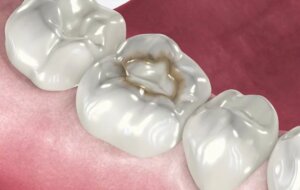
Cavity Under An Old Filling
A Cavity Under An Old Filling What Is A Cavity Under An Old Filling? If you have ever had a dental filling, you might assume
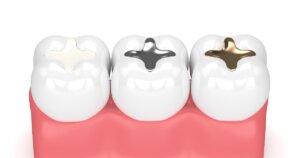
Dental Filling Pre-Operative Instructions
Dental Filling Pre-Operative Instructions What You Should Do Before Your Dental Filling Appointment A tooth filling is the cosmetic dentist’s primary method of repairing teeth
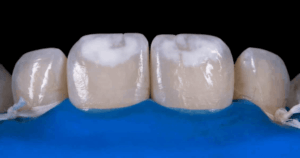
White Spot Lesions
White Spot Lesions What Are White Spot Lesions? White spot lesions, also known as enamel decalcifications, are common dental conditions characterized by chalky white patches
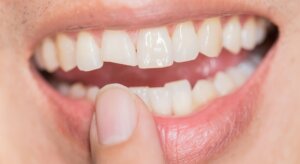
Missing Tooth Filling
Missing Tooth Filling What Is A Missing Tooth Filling? A dental filling is a common treatment used to fix a tooth that has been damaged
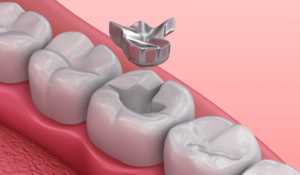
Amalgam Filling
Amalgam Filling What Is An Amalgam Filling? An Amalgam Filling is a dental restorative material used to repair teeth that have been compromised by dental
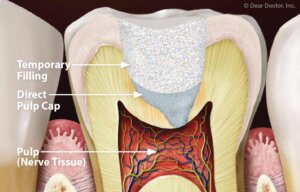
Direct Pulp Capping
Direct Pulp capping What Is Direct Pulp Capping? Your dental health is a crucial part of your overall well-being, and it’s essential to stay informed

